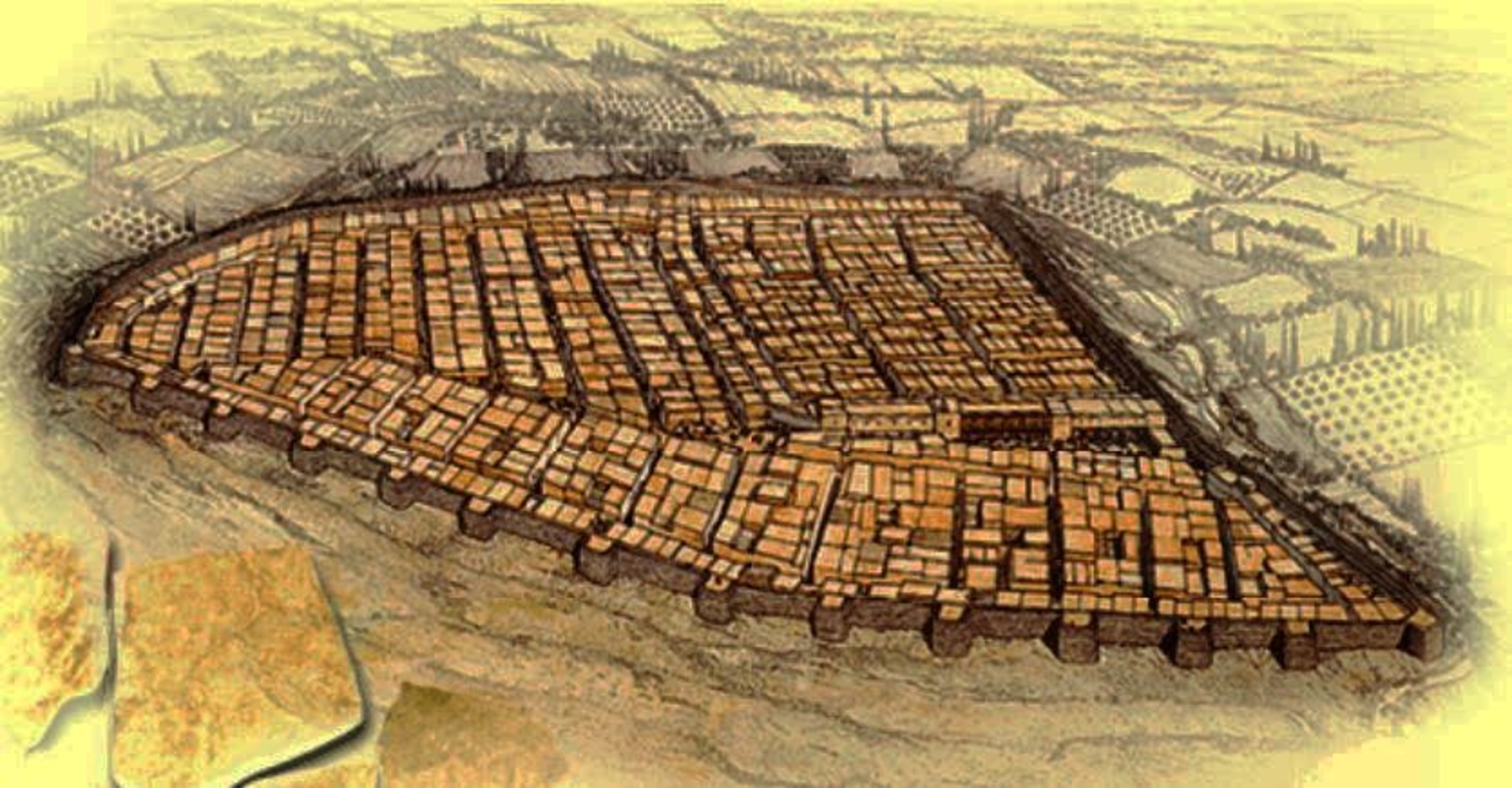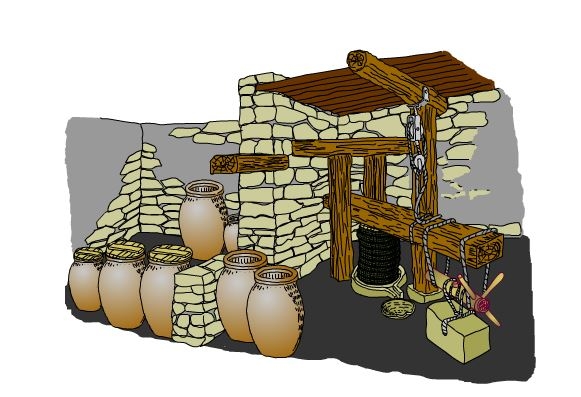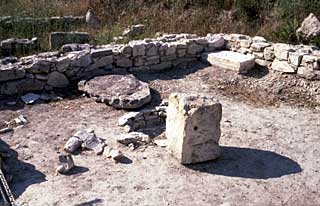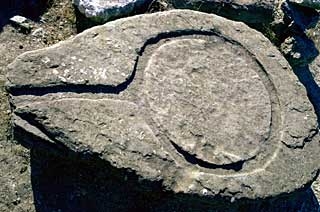- Home
- Architecture and settlement
- Settlement II (2nd agglomeration)
- The oil press
Oil Press.
Reconstruction by the Ecole d’architecture de Paris-Val-de-Seine (EVCAU), according to a drawing by Jean-Pierre Brun
Among the multiple traces of wine or oil presses discovered on the site, only one was preserved well enough to allow a detailed study and reconstruction.
This installation in islet 3, in the western quarter of settlement II, occupied two roughly square rooms measuring approximately 30m2. The first room, with a large door opening directly onto the street, housed the machinery. The second room served for storage of the product in jars. Next to these rooms, but without direct communication, were some elongated rooms in which dolia were stocked. This confirms that this quarter was primarily devoted to craft activities.
The oil press of islet 3: squeezer base, pit where the recipient was lodged, stone counterweight with a pierced hole for suspension. CCJ
Squeezer base of the oil press of islet 10. CCJ
The oil press was constructed with a beam and suspended weights. The olives must be crushed before they are pressed.
This was likely done by hand using the numerous cobbles that have been found at the site. The beam, which was oriented diagonally in the room, was anchored to the corner between two walls in order to increase the weight necessary for the efficient functioning of the machine.
It was guided by two posts, whose wedging holes were found in an oblique line with the corner of the two walls. A stone was suspended at the extremity of the beam. It had a pierced hole for the attachment of a rope, which in turn was attached to a roof beam and used to raise and lower the stone. It weighed approximately 400 kg.
The squeezer base, which measured 1.44 by 1.10 meters, was displaced when the city was sacked. In the center of the room, there must have been a pit that contained the recipient that collected the juice that ran from the squeezer base. Pliable baskets filled with olive paste were placed on the squeezer base. Three dolia and the pantry were located along one wall. According to the remains found, the second room could have contained six dolia. The total stockage capacity of this room was 3000 liters.
This type of press could have served for the production of wine as well as oil. However, chemical analyses of the floor and the interior surfaces of jars have shown that in this case oil was pressed.



